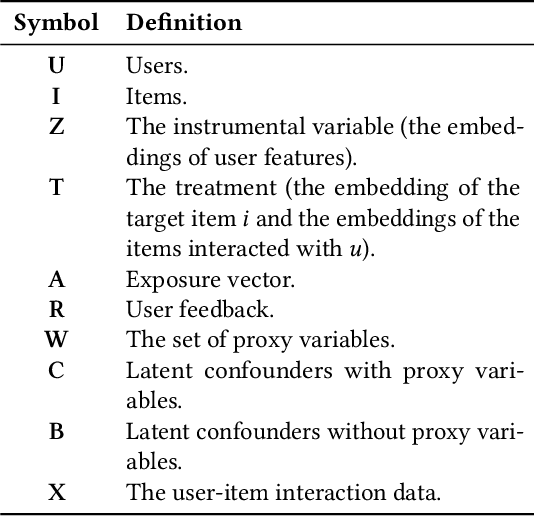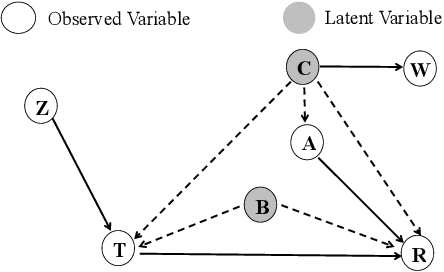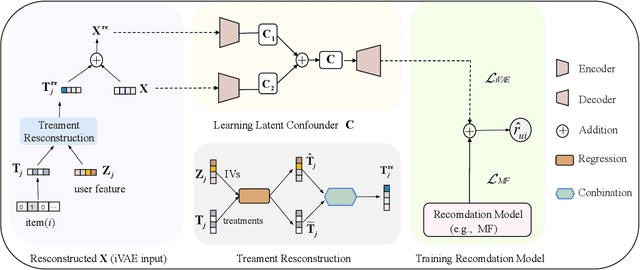Jianfeng Deng
Mitigating Dual Latent Confounding Biases in Recommender Systems
Oct 16, 2024



Abstract:Recommender systems are extensively utilised across various areas to predict user preferences for personalised experiences and enhanced user engagement and satisfaction. Traditional recommender systems, however, are complicated by confounding bias, particularly in the presence of latent confounders that affect both item exposure and user feedback. Existing debiasing methods often fail to capture the complex interactions caused by latent confounders in interaction data, especially when dual latent confounders affect both the user and item sides. To address this, we propose a novel debiasing method that jointly integrates the Instrumental Variables (IV) approach and identifiable Variational Auto-Encoder (iVAE) for Debiased representation learning in Recommendation systems, referred to as IViDR. Specifically, IViDR leverages the embeddings of user features as IVs to address confounding bias caused by latent confounders between items and user feedback, and reconstructs the embedding of items to obtain debiased interaction data. Moreover, IViDR employs an Identifiable Variational Auto-Encoder (iVAE) to infer identifiable representations of latent confounders between item exposure and user feedback from both the original and debiased interaction data. Additionally, we provide theoretical analyses of the soundness of using IV and the identifiability of the latent representations. Extensive experiments on both synthetic and real-world datasets demonstrate that IViDR outperforms state-of-the-art models in reducing bias and providing reliable recommendations.
Self-attention-based BiGRU and capsule network for named entity recognition
Jan 30, 2020



Abstract:Named entity recognition(NER) is one of the tasks of natural language processing(NLP). In view of the problem that the traditional character representation ability is weak and the neural network method is unable to capture the important sequence information. An self-attention-based bidirectional gated recurrent unit(BiGRU) and capsule network(CapsNet) for NER is proposed. This model generates character vectors through bidirectional encoder representation of transformers(BERT) pre-trained model. BiGRU is used to capture sequence context features, and self-attention mechanism is proposed to give different focus on the information captured by hidden layer of BiGRU. Finally, we propose to use CapsNet for entity recognition. We evaluated the recognition performance of the model on two datasets. Experimental results show that the model has better performance without relying on external dictionary information.
 Add to Chrome
Add to Chrome Add to Firefox
Add to Firefox Add to Edge
Add to Edge